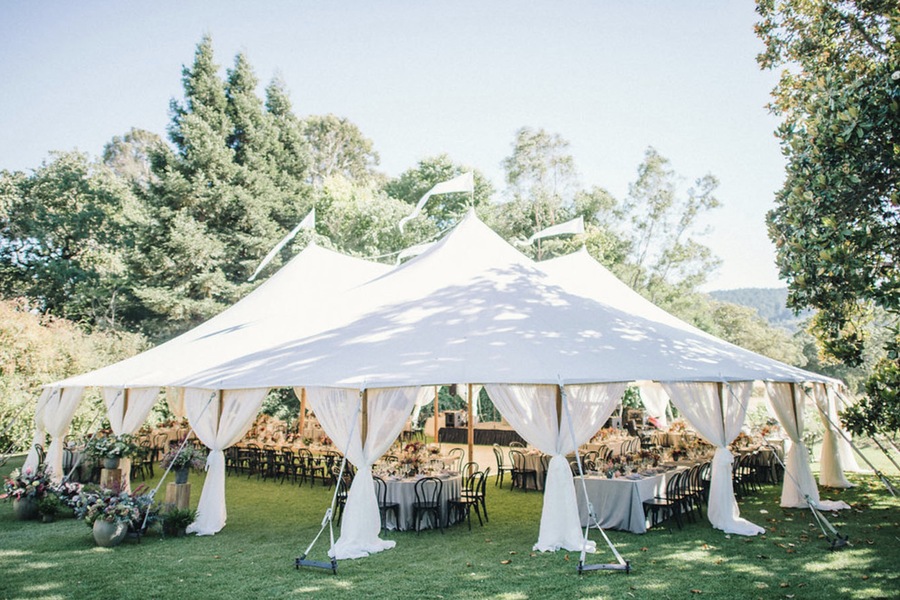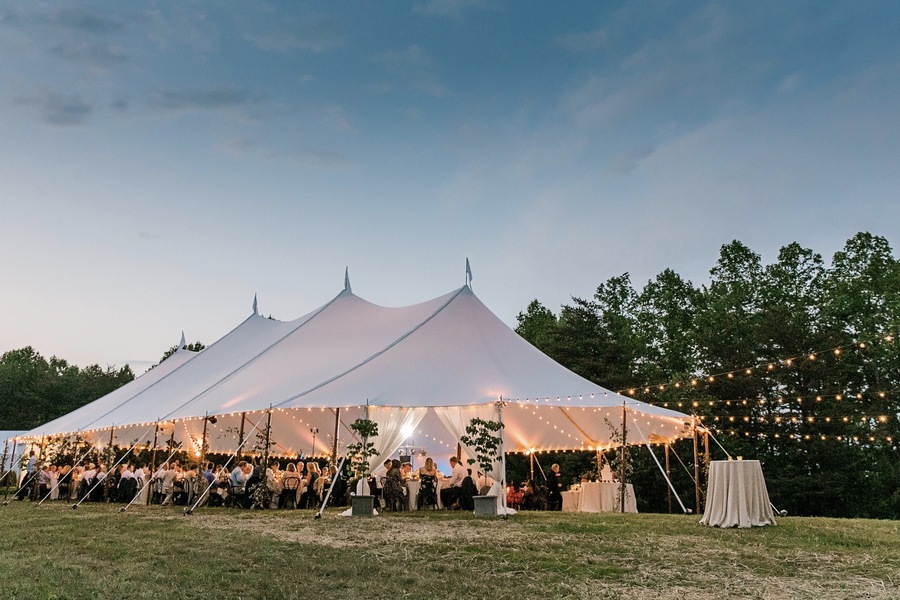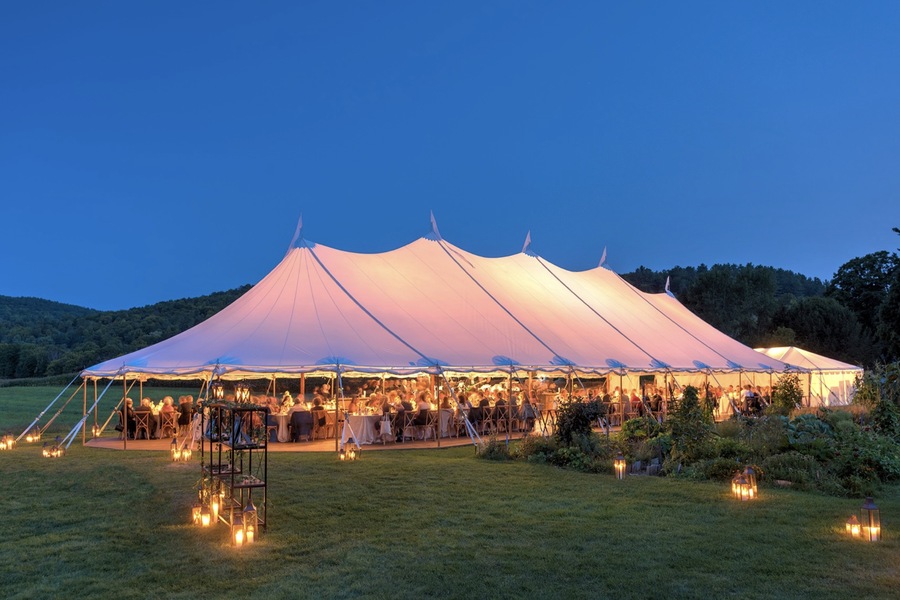Planning an event is an exciting yet complex process that requires meticulous attention to detail, and one of the most crucial decisions is selecting the right tent. A tent provides not only a practical solution for shelter but also sets the tone and ambiance for the entire event. However, with the sheer variety of tent models, sizes, and designs available, making the right choice can be challenging. This is where Rental Joy comes in, offering a wide selection of tents to suit every occasion. Whether you’re organizing an intimate family gathering, a grand wedding, or a bustling festival, the right tent from Rental Joy will ensure your guests are comfortable and your event runs smoothly.
Here, we will explore the essential factors to consider when choosing a tent for your event, how to calculate the tent size based on your guest list, and different types of tent structures suited for various occasions.
Guest Count: The Primary Factor
One of the first things to consider when choosing a tent is the number of people who will be attending the event. The tent should be spacious enough to accommodate all guests comfortably while still leaving room for other event essentials like furniture, walkways, and decorations. A rule of thumb for calculating tent size is:
– Seating Arrangements: If your event includes seated guests, such as at a wedding or a banquet, each guest should be allocated at least 1.5-2 square meters of space. This ensures everyone has enough room to sit comfortably without feeling crowded. For example, if you’re hosting a banquet for 50 people, you would need at least 100 square meters of tent space.
– Standing Events: For events like cocktail receptions, exhibitions, or festivals where people are more likely to be standing and mingling, the required space is reduced. Typically, you can allocate about 1.5 square meters per person. For a crowd of 100 guests, around 150 square meters would be ideal to ensure easy movement.
– Flow of People: For events that involve foot traffic, such as exhibitions, presentations, or sales, it’s important to leave enough space for people to move freely. Corridors and walkways should be wide enough (between 1.5 to 3 meters) to allow guests to pass without bottlenecks.
– Additional Space for Furniture and Equipment: Don’t forget to factor in space for additional furniture, stages, equipment, and catering areas. If you’re setting up tables, chairs, buffet stations, or a DJ booth, these will require extra room. Make sure the tent is large enough to accommodate these elements without obstructing the guest area.

Type of Event: Tailoring Your Tent to the Occasion
The type of event you’re hosting will significantly influence the style and structure of the tent you choose. A corporate meeting, for example, will have different needs compared to a lively outdoor festival or a serene wedding ceremony. Here are some suggestions for matching tent styles to specific events:
– Weddings: Weddings often require a balance of elegance and functionality. For an outdoor wedding, a large arched or hexagonal tent can create a beautiful backdrop for the ceremony and reception. The tent should be spacious enough to house the seating arrangement, a dance floor, and a dining area, and it can be further enhanced with drapes, chandeliers, and floral decorations.
– Corporate Events and Exhibitions: For business meetings, product launches, or exhibitions, tents with clean, modern designs are ideal. Arched structures or Pagoda tents provide a professional yet stylish atmosphere, and they can easily be customized with branding elements like logos and banners. It’s also important to include space for presentation areas, product displays, and seating for discussions.
– Festivals and Concerts: Large festivals or concerts require expansive tents that can accommodate hundreds or even thousands of guests. Hexagonal or modular tents are ideal as they provide large, open areas with the flexibility to link multiple structures together, creating a village-like setup for various vendors, performance stages, and food areas.
– Family Gatherings and Parties: For smaller, more intimate events like family reunions, birthday parties, or anniversaries, a compact Pagoda or arched tent is often enough. These tents create a cozy atmosphere, allowing guests to feel connected while enjoying protection from the elements.
– Outdoor Markets and Fairs: For events like craft fairs, food festivals, or farmer’s markets, smaller modular tents or Pagoda tents are ideal. They are easy to set up, can be placed side-by-side to create a market-like environment, and provide adequate shelter for vendors and visitors alike.
Weather Considerations: Preparing for Nature’s Surprises
Another important factor when choosing a tent is the weather conditions during the event. Outdoor events, especially, are at the mercy of the elements, so selecting a tent that offers protection from wind, rain, or excessive heat is crucial.
– Rain and Wind Protection: For events held in the rainy season or windy areas, arched structures with durable walls are an excellent choice. These tents can be equipped with side panels or curtains to block out wind and rain, ensuring that your guests remain dry and comfortable throughout the event.
– Hot Weather Solutions: If you’re hosting an event during the warmer months, ventilation is key. Open-sided tents like Pagodas or large hexagonal tents allow for natural airflow, helping to keep the inside cool. Consider adding fans or air conditioning units if the temperature is expected to be particularly high.
– Seasonal Adaptability: In cooler months, tents can be fitted with heating systems, insulated flooring, and heavy-duty walls to create a warm, cozy environment. Some companies also offer clear or transparent tents that let in natural light, creating an airy, open feel while still offering protection from the cold.
Tent Size and Structure: Exploring Different Options
Tent structures come in various shapes and sizes, each designed to serve a specific purpose. Here’s a look at some of the most popular tent types and their typical uses:
Pagoda Tents: The Charm of the East
Pagoda tents are known for their peaked roofs, giving them an elegant, exotic look. They are versatile and can be used for various purposes:
– 4-9 sq.m: These are often used as auxiliary spaces for kitchens, dressing rooms, or storage areas.
– 16-25 sq.m: Suitable for small gatherings, such as family parties, with enough space for 11-16 people.
– 65 sq.m: Perfect for small to medium-sized events, accommodating up to 45 people for a banquet or 70 for a buffet-style reception.
Arched Structures: A Classic Choice
Arched tents are a timeless option, offering both beauty and practicality. Their curved design provides excellent structural stability and protection from the elements.
– 12-25 sq.m: These tents are often used as additional spaces at larger events or for intimate gatherings of up to 16 guests.
– 36-64 sq.m: Ideal for business meetings or round table discussions, seating 25-35 people.
– 100 sq.m: This size is popular for weddings and can comfortably seat up to 65 guests.
Hexagonal Tents: For Large-Scale Events
Hexagonal tents are known for their expansive interior space, making them a popular choice for large gatherings.
– 163-460 sq.m: These tents can host between 90 to 500 guests, depending on the event layout (banquet or buffet). They are perfect for outdoor festivals, corporate events, and large parties.
Modularity: Expanding Your Tent’s Capacity
One of the biggest advantages of tent structures is their modularity. If your event requires additional space, you can expand the tent area by connecting multiple structures. This modular approach allows you to customize the layout, creating separate zones for dining, dancing, presentations, and more.
For example, you could use one large tent for the main event while setting up smaller Pagoda tents as lounges, cloakrooms, or catering areas. Modular setups are also ideal for creating unique, visually stunning arrangements, such as connecting tents in a star-shaped pattern to create an impressive “tent village.”

Professional Assistance: Ensuring a Seamless Experience
While it’s possible to calculate the size and layout of your tent yourself, working with a professional tent rental company ensures that nothing is overlooked. Experienced tent providers can help you select the ideal structure for your event, recommend additional features like flooring, lighting, or temperature control, and manage the setup and takedown, leaving you free to focus on other aspects of event planning.
In Dubai, Rental Joy is a top choice for tent rentals, offering a wide range of tent sizes and styles. Their team of professionals can assist you with every detail, from selecting the right tent to arranging accessories such as furniture and decorations. Whether you need a large 24×12 meter tent for 150 guests or a smaller structure for a family gathering, they provide high-quality solutions to suit your needs.
Conclusion
Selecting the perfect tent for your event involves careful consideration of multiple factors, including the guest count, event type, weather conditions, and tent size. By planning ahead and working with experienced tent rental professionals, you can ensure that your event is both comfortable and memorable. Whether you’re hosting a wedding, corporate event, or festival, the right tent will create the ideal atmosphere for your guests to enjoy the occasion.

Surfer, hustler, fender owner, International Swiss style practitioner and recent OCAD grad. Acting at the nexus of design and elegance to create great work for living breathing human beings. Let’s design a world that’s thoughtful, considered and aesthetically pleasing.
